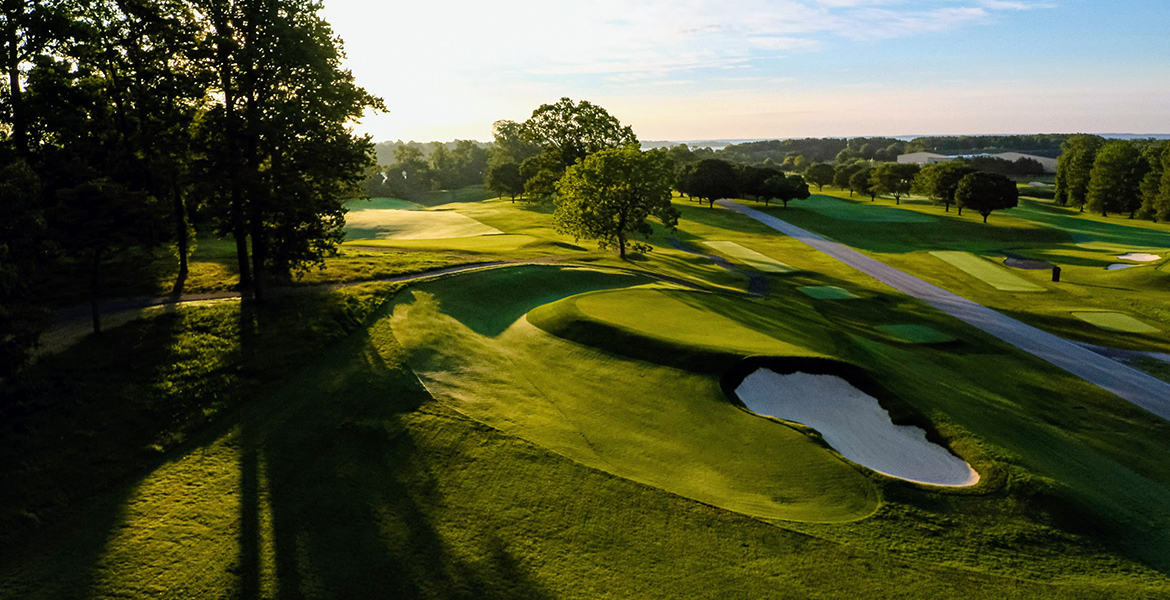Can a golf course be too natural? That question has been rattling around in my head for a while as I’ve been bouncing around looking at and playing courses new and old.No one course prompted this thought. And I’ll be the first to admit that I don’t have a definitive answer. But the more I see swelling dunes and gigantic sand blow-outs, spidery bunkers and greens the size of helipads, the more I wonder if what we’re calling “natural” is anything but. And if those golfers lucky (or rich) enough to see these generally out-of-the-way, barely-touched-by-man wonders will quickly tire of terrain run rampant.

Grist was added to my pondering when, during a recent chat with a well-known golf course architect, he said something that stuck with me: “Architecture is about intervention.” He said that while he’s all for making the most of what nature provides, the architect’s job is to create something that makes good golf shots possible while allowing the eyes to “read” the property.
Around the world and throughout the U.S., incredibly beautiful courses are being laid upon the land. I’ve been privileged to see some of them and, almost without exception, been captivated. They’re big, bold, and dramatic, and are both challenging and, for the most part, fun. But I’m beginning to think of them a little like candy—a quick sugar rush of excitement and not very nourishing.
I wonder if these are going to be courses that people will want to play day after day. Forget the cost and the difficulty of getting to them. Will we want to keep returning to courses that are built to be spectacles? That in many ways challenge what we think of as good golf? That are so visually overwhelming that they can be hard to read, and so idiosyncratic that playing well demands almost as much luck as talent?

These courses fit into a theory I’ve been espousing for a few years, about the difference between “visitor” and “everyday” golf. The everyday—usually private—course is for the player who returns every week if not more often, who gets to know every twist, turn, and break on the green, and whose joy comes from having repeated chances to play it properly and wring out the best score.
Visitor courses—resort and the best public—are largely a one-time experience. Since you may never come back, the course has to thrill, tease, and slap you in the face on every hole, sometimes every shot. You’ve paid your money and you want to be gob-smacked non-stop for four or more hours.
These requirements produce very different kinds of courses. Neither is right or wrong. They’re just different. My worry is that the new courses are doing way too much slapping around. And I wonder if they will stand the test of time.

Of course, it isn’t simply because they are too natural. The Old Course at St. Andrews is pretty natural, as are many other courses around the world where the layout truly lays lightly upon the land and manages to enchant without taking you on a roller-coaster ride. And some of those great old courses have the occasional wacky feature, which over time comes to be regarded as “quaint” or “quirky” and is what we remember from our golf travels: Think of the Dell at Lahinch, the Church Pews at Oakmont, the tree in the middle of the 18th fairway at Pebble Beach.
But 18 holes of that?
Another problem with these “wow factor” courses is that they, by necessity, cater to people who don’t mind spending big bucks to get to and play them. You could say the same about Pebble Beach, Sawgrass, and many other high-cost tracks, too. But right now, at a time when so few courses are being built (and too many are closing), this emphasis on “wow” seems to be pushing golf further and further from the average golfer and the new golfers the game needs.
I’m all for natural golf courses, for playing the game the way the land dictates. And these great new courses are a blast, worth playing, and show that there’s room for experimentation and variety in where we play. But I also agree that “intervention” is necessary—and some restraint, as well—so the golfer can have the best possible experience every time.
Something else my architect friend said was “Looking like it’s been there forever is not the same as natural.” Think about it.






